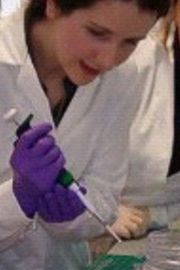Metabolic Endotoxaemia and Meal Frequency in Subjects with Obesity.
There is valued evidence that the type and amount of dietary fat has a direct impact on our metabolic risk, particularly in the context of heart disease. This study sought to determine how the frequency of fat intake impacts on the human inflammatory response. As such, a clinical trial was conducted with 13 subjects in each group, lean and non-diabetic overweight/obese (OW/OB). The lean group included subjects with BMI <25 kg/m2, and OW/OB group included subjects with BMI >27 kg/m2.
Each subject attended for two visits within a two week period, and was given two meals and five meals over a 12 hour period, following an overnight fast beforehand. Meals comprised of 50% fat, 30% carbohydrate and 20% protein, with equal calories on both visits. Blood samples were taken every two hours from 9am to 9pm across 7 time points (giving 14 samples per subject). Assays were performed for glucose, insulin, lipid profile (total cholesterol, TG, LDL and HDL) as well as NEFA. The serum was also used to measure endotoxin (bacterial) levels and inflammatory markers. The funding provided by the Medical and Life Sciences Research Fund Bursary Award supported the use of these assays.
These studies demonstrated that the frequency of high fat meals (2 or 5 meal daily) did not lead to systemic inflammation in either the lean or OW/OB subjects compared with the consumption of calorie and fat content matched meals. Although there was also no difference in lipid profile levels when comparing the effect of meal frequency, OW/OB subjects had a raised TG (fats in the blood that can be stored) level and lower HDL cholesterol (good cholesterol) level compared with the lean subjects, indicating that OW/Ob subjects were not able to cope with the post-meal changes.
As anticipated, the lean clinical cohort had a significantly lower TG and higher HDL cholesterol for both the 2 meal and 5 meal visits, whilst there was no difference for total cholesterol, LDL (bad cholesterol) or NEFA (breakdown product of stored fat). NEFA levels were similar in both the lean and OW/OB subjects, and an expected sharp fall in NEFA levels following a meal was observed in both lean and OW/OB subjects, following breakfast and lunch.
Previous data appears to have indicated it is important when people ate, but this study shows that, even those who are obese have a higher TG level and endotoxin (bacterial) level appear to cope with the change in meal frequency, unlike patients with type 2 diabetes. What is key, though, is how many calories are consumed per day - not necessarily how frequently, to affect your inflammatory status. However we do know the higher the fat content the more the inflammatory state will increase so it is vital to have the appropriate level of sugars, fats and protein, which people often struggle with.
Also we know that the more fat you have the more endotoxin increases and this can lead to increase TG laid down in your fat stores as the day progresses. Furthermore, the endotoxin also acts on the fat to cause a more pronounced inflammatory response which, in turn, is aggravated with weight gain. These studies highlight that with weight gain you should eat proportionally less fat to maintain health and a low inflammatory status.
The data has been accepted for presentation at the international conference, the European Association for the Study of Diabetes (EASD), held in Barcelona in September 2013. (Abstract entitled: The impact of high fat meal frequency on metabolic profile and energy expenditure in obese subjects.) Following this, the data will form part of a paper to be submitted to the journal ‘Diabetes Care’. In both cases, the funding from the Medical and Life Sciences Research Fund Bursary Award will be formally acknowledged.



